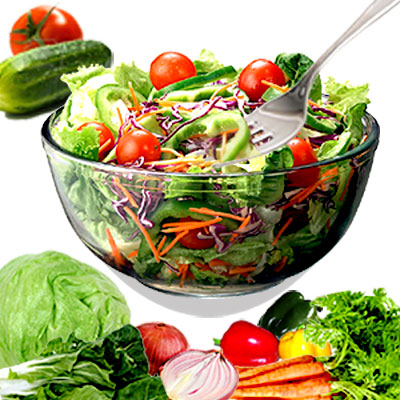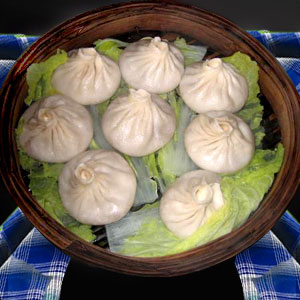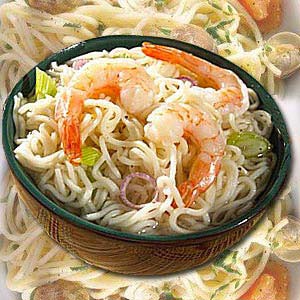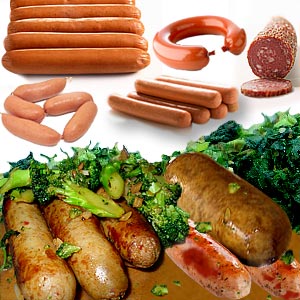Food Allergy Symptom

Never underestimate the reaction to any food allergy. The Center for Food Safety and Applied Nutrition wing of the FDA is promoting awareness for food allergies among consumers and the food industry. Efforts are afloat to bring to notice common food allergens. Let us familiarize you with common food allergies and how they are triggered by an immune reaction. We understand various food allergy symptoms as well as various diagnostic tests.
Food Allergy
A food allergy is an abnormal response to some food that is triggered by the body's immune system. Food allergies must not be confused with food intolerance or food poisoning. Nearly 6% of children and about 1.5% of American adults are diagnosed with some form of food allergy. Allergies to food groups can manifest in symptoms such as vomiting and skin eruptions or even result in life threatening reactions such as constrictions in the wind pipe or swelling of the throat or tongue. Anaphylaxis is a potentially fatal allergic reaction to some food that reacts in a whole body reaction or shock.
According to research conducted at the National Institute of Allergy and Infectious Diseases, the body's immune system reacts in 2 ways - production of an antibody called immunoglobulin E (IgE) and a type of cell called mast cell. IgE circulates in the blood whereas mast cells are typically concentrated in sites of allergic reactions such as nose, skin, throat and gastrointestinal tract. When a person who has an allergic predisposition consumes the particular food, specific IgE is produced against it. This IgE attaches to the surface of the mast cells.
When the particular food is consumed again, protein interacts with the particular IgE and triggers release of histamines and results in symptoms of allergic reaction such as itchy watery eyes and rashes and hives. A person who has a tendency to develop allergies will produce increased amounts of IgE. Heredity plays a role in common food allergies. This is attributed to a recessive gene that plays a role in IgE related food allergies. It has been noticed that prenatal maternal diet and smoking may play a role in developing food allergy.
Food Intolerance or Food Sensitivity does not trigger off an immune reaction from the body. Such food sensitivities do not involve IgE. A common manifestation of food sensitivity is lactose intolerance. This happens because the person lacks a certain enzyme that is essential to digest dairy proteins. Food sensitivity to MSG (Mono Sodium Glutamate) is also referred to as Chinese restaurant syndrome. Food Toxicity is a pseudo allergic reaction to toxins and poison that occur in potatoes, beans and bacterial contaminants.
Food Allergy Symptom
Reactions to food allergy can range from swelling on lips to swelling and itching on various parts of the body. Some persons feel dizzy or experience vomiting and diarrhea. Wheezing or runny nose symptoms are also seen in some types of food allergy. These symptoms can usually be seen within an hour of eating the particular food. Sometimes the reaction is immediate. Mast cells in the gastrointestinal tract can lead to abdominal pain and diarrhea whereas skin mast cells produce intense itching and hives. When the mast cells release histamines in the nose and throat, it results in itching tongue or difficulty in breathing or swallowing. Food allergy symptoms are affected by the digestive process too. What may begin as a severe itching in the tongue may follow as vomiting and stomach cramps. As the allergens travel the body and enter the bloodstream, food allergy symptoms such as hives and lowering of blood pressure appear.
Common Food Allergy
Common trigger foods that can cause allergies are fish, eggs, and proteins in milk, peanuts, tomatoes and strawberries. Common food allergy is also noticed for soy and cow's milk. If a person suffers one food allergy, chances are that you may react adversely to other foods too. A person allergic to prawns may suffer allergy to other forms of shellfish, crabs, lobsters and shrimps. A person allergic to peanuts is likely to be allergic to other nuts too. Those suffering from common food allergies must avoid eating foods the ingredients of which they are unsure. It is necessary to read food labels carefully and order carefully in restaurants. Look up food allergy cookbooks for planning safe menus and recipes to tackle food allergies.
Food Allergy Testing
A physician can help you in identifying a food allergy. Your medical history and trigger reactions will need to be filed. Food allergy testing will then be conducted. While some persons are able to identify the trigger foods, others may need to consult an allergist to determine the exact food that triggers an allergic reaction. Food allergy testing can be done in the following ways:
Blood Tests are conducted to check for antibodies against specific food allergens. This is usually followed with an oral challenge test to observe reaction to small doses of the suspected food allergen. Popular blood tests for food allergens are RAST (Radio-Allergo-Sorbent Test) and ELISA (Enzyme Linked Immuno-Sorbent Assay). These tests detect IgE or IgE antibodies in the blood sample. RAST is useful in diagnosing severe food allergies.
Skin Tests are done by placing dilute extracts of various foods on the skin. The skin is then checked for formation of bumps. Swellings can be indicative of allergy to a particular food.
Elimination Diet is a process of trial and error whereby you stop eating food that may be the cause of allergy. Reintroduction of this food into the diet can pin point the offending food item. If a person is allergic to one or two food items, they can be easily eliminated from the diet. Rotation diets are prescribed as treatment for food allergy to many food groups. Eating them on a rotated basis leads to reduced exposure and hopefully increases body tolerance for them.
Food Allergy Treatment
Itching can be controlled with antihistamines and relieve with calamine lotion. A cool shower may help. Anaphylaxis is treated with Epinephrine since it acts as a bronchodilator. Benadryl (Diphenhydramine) is used for less severe reactions as it reverses the effects of histamines. Allergy shots are administered to those suffering from disruptive food allergy symptoms. They alter the immune response thereby preventing future reactions. Vitamin C has been used as anti-allergy supplement since it helps stabilize mast cells and makes them less likely to release histamines. Pantothenic acid is sometimes used for general allergy relief. The pH of the body becomes more acid during an allergic reaction, and these supplements help alkalinize the blood, thus making you feel better.
Top of the Page: Food Allergy Symptom
Tags:#food allergy #food allergy symptom #food allergy testing #food allergy test #common food allergy
 Food and Nutrition Facts
Food and Nutrition Facts Chamomile
Parsnip Soup
Dim Sum
Gazpacho Soup
Whole Grain Cereal
Jicama Nutrition
Bok Choy Stir Fry
Chia Seeds Benefits
Teff Nutrition
Kaniwa
Flax Seed
Wheatgrass Benefits
Kelp Benefits
Types of Chili Peppers
Medicinal Benefits of Pomegranate
Arugula Leaves
Maca Root
Pitaya Fruit
Benefits of Celery
Leek
Asparagus Benefits
Oyster Stew
Oyster Mushroom
Lupin Beans
Quinoa
Freekeh
Extra Virgin Olive Oil
Dill Pickle
Sauerkraut
Fat Burning Foods
Nutrition Chart
Food Combining
Calorie Counter
calories ...
Non Alcoholic Beverage
Punch Recipes
Food Label Nutrition
Homemade Sausages
Cooking Steak
Eating on a Budget
Budget Friendly Recipes
Quick Recipes
 Healthy Packed Lunch
Healthy Packed Lunch Overnight Oats Recipes
Eggplant Casserole
Brunch Recipes
Burrito Recipes
Muffin Recipes
Cupcake Frosting
Apple Crisp
Stir Fry Cooking
Seafood Salad Recipe
Cooking Corn on the Cob
Finger Food Recipe
Sandwich Recipe
Bread Stuffing Recipes
Easy Chili Recipes
Picnic Recipes
Edible Mushroom Recipes
Mushroom Soup Recipes
Dip Recipe
Tapas Recipe
Corned Beef Recipe
Canned Salmon Recipe
Tilapia Recipes
Crumb Cake
Flourless Chocolate Cake
Regional Food
 Lasagna Recipe
Lasagna Recipe Peruvian Ceviche
Chinese Food Recipe
Vietnamese Food Recipe
Malaysian Food
Korean Food Recipe
Indian Curry Recipe
Edible Rice Paper
Mexican Food Recipe
Quesadilla
Guacamole Dip
Italian Food Recipe
Spanish Food Recipe
Kosher Food
Falafel Recipe
Tandoori Chicken
Noodles
Canape
Couscous
Meatloaf
Chowder
Gumbo Recipe
Crockpot Recipes
Moroccan Food
Healthy Food
Pre Workout Snack
Matcha Tea
Simple food Swaps to Lose Weight
Foods to Beat Stress
Foods to beat Insomnia
Bone Density Foods
Prebiotic Foods
Kefir Grains
Agave Nectar
Spicy Trail Mix
Pesto Sauce
Homemade Hummus
Crab Cake Sauce
Bamboo Shoots Nutrition
Lemon Grass Plant
Butter Beans Recipes
Loose Green Tea
Seaweed Nutrition
Healthy Food
Low Fat Granola Bar
Steel Cut Oatmeal
Fruit Pizza
Pizza Toppings
Green Smoothie
Healthy Meal Planning
Delicious Mealtime Recipes
Heart Healthy Fats
Healthy Heart Recipe
Healthy Dinner Recipe
Healthy Dessert Recipe
Healthy Fast Food
Healthy Kid Recipe
Probiotic Food
Diabetic Friendly Foods
Fruit Salad Recipe
Bread Pudding
Tofu Recipe
Oat Bran
Broccoli Salad
Avocado Recipe
Iron Rich Food
Brain Foods
Antioxidant Food
Natural Diuretic
Low Fat Cooking Tips
Rice Pilaf Recipe
Low fat Chicken Recipe
Food Tips

Sous Vide Cooking Technique
Natural Sugar Substitute
Stevia Sugar Substitute
Sunflower Seeds Nutrition
Bouquet Garni
Cake Decorating Tips
High Satiety Foods
Thanksgiving Dinner
Safe Food Storage
Frozen Food Storage Tips
Cold Storage Food Tips
Leftover Recipe
Food Pyramid
Dairy Free Food
Microwave Cooking
Food Intolerance
Homemade Ice Cream
Apple Cider Vinegar
Benefits of Honey
Beverage Cooler
Food Poisoning Symptom
Food Allergy Symptom
Food Addiction
Top of the Page: Food Allergy Symptom
Popularity Index: 103,309

